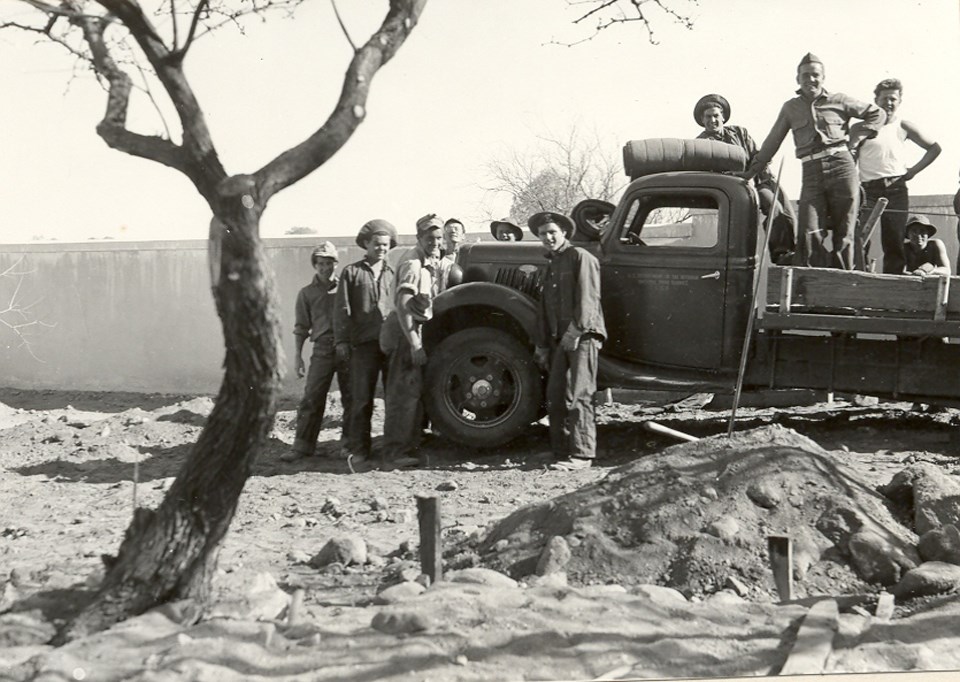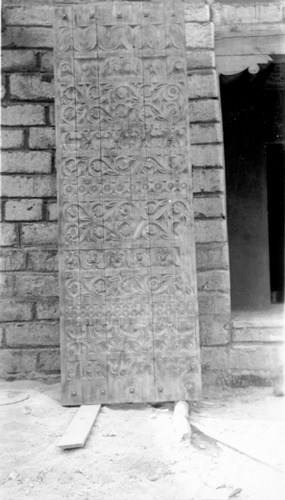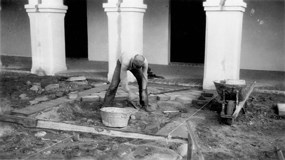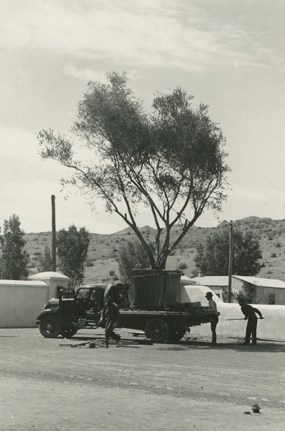Part of a series of articles titled The New Deal at Tumacácori.
Article
Civilian Conservation Corps at Tumacácori

The Civilian Conservation Corps (CCC) is one of the most well-remembered and highly regarded programs of the New Deal. Responding to the President’s pleas, Congress passed and FDR signed the Emergency Conservation Work Act, from which came the CCC. Only 34 days after FDR’S inauguration the first enrollees were inducted, on April 7, 1933.
The CCC employed young, unmarried men, ages 17 to 23, in manual labor work on projects related to conservation and development of natural resources in federal, state, and local government-owned lands. The “CCC boys” were housed in camps. They were paid $30 a month, $25 of which was sent directly home to their parents.

The CCC at Tumacácori
Camp NM-1-N, located at Bandelier National Monument in New Mexico, made important contributions to Tumacácori’s visitor center. In 1936, they carved signs for the restrooms, and in 1937 made and carved the visitor center front doors. The doors, still in use, were designed based on the doors of the San Ignacio mission church in Sonora, Mexico. The camp later made furniture for the lobby – a cabinet and a wooden bench with a leather seat pad. The bench is still in use today in the visitor center lobby.

The work of Camp SP-11-A, based at Saguaro National Monument (now Saguaro National Park) is still enjoyed every day by visitors to Tumacácori. It was the young men of this camp who, in 1939 and 1940, installed the visitor center courtyard garden – planting trees, laying out and installing the brick paths, creating the fountain and the adobe benches still in use today.

NPS Photo
Custodian Louis Caywood monthly report: March, 1939
“On March 13 Landscape Architect Charles Carter arrived with 16 CCC boys to begin work on the patio garden. Several shrubs and trees were first removed for the patio area. Part of the wall was removed to facilitate movement of trucks into the area. To date about one third of the filling and grading has been done. Holes were dug for four olive trees, and one olive tree has been brought from Phoenix and planted. It is doing well, thanks.”
In 1940, the Saguaro crew finished work in the garden and went on to install the flagpole on the west side of the parking area and lay the brick paths and curbs leading to the visitor center door. (The brick retaining walls at the doorway were a 1950 addition.)
Last updated: June 21, 2020
